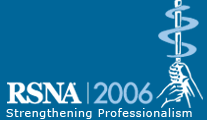The global objectives of this presentation are to: 1) Review the opportunities and challenges for optimizing image quality and dose in digital projection radiography for the adult population. 2) Illustrate the variables that impact dose, including patient size, kVp, mAs, tube filtration, anti-scatter grid, acquisition geometry, types of detectors and dose efficiency. 3) Discuss the image acquisition process, contrast and spatial resolution, pre- and post-processing adjustments, and the means to acquire images of appropriate image quality with a radiation dose as low as practical. 4) Demonstrate the need to measure and monitor the receptor dose to identify overexposures that can easily be hidden and cause unnecessarily high dose to the patient. 5) Show instances where reproducibility and slightly higher dose is more important than attempting to achieve the lowest dose, such as in longitudinal studies of bedside radiography.
Seibert, J,
Computed Radiography/Digital Radiography: Adult. Radiological Society of North America 2006 Scientific Assembly and Annual Meeting, November 26 - December 1, 2006 ,Chicago IL.
http://archive.rsna.org/2006/4425864.html

